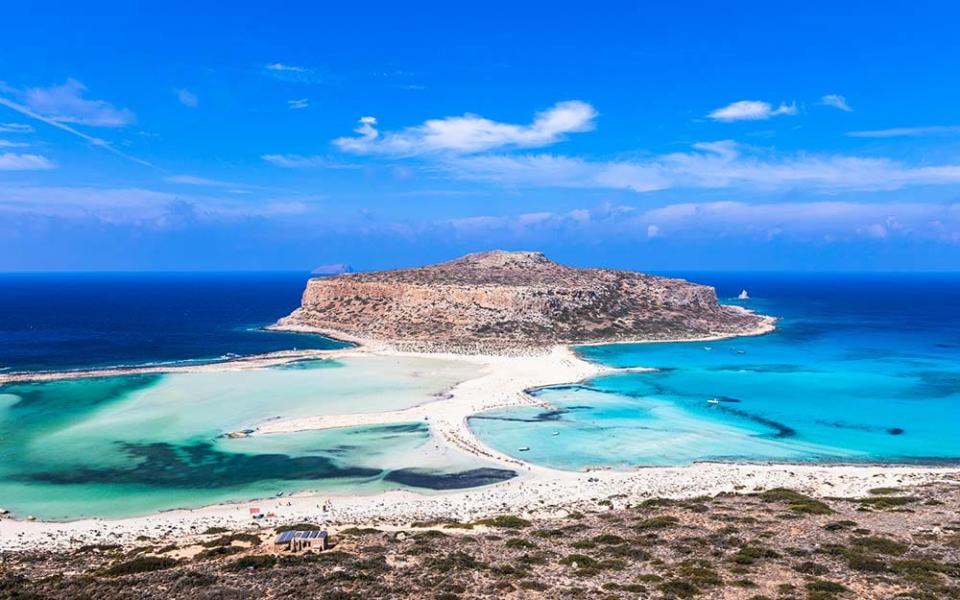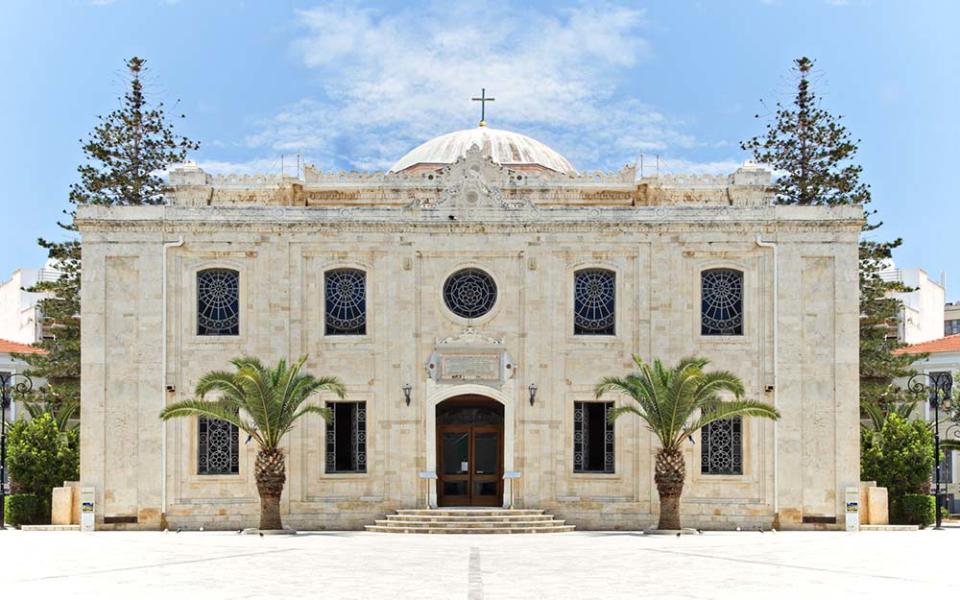Crete is back on the map – and should be on your cruise itinerary

It’s had all the makings of a Greek tragedy, but a happy ending beckons as another island of the Hellenic Republic crept back onto the UK’s travel corridor list.
On Thursday afternoon Crete was the latest Greek isle to get the green light from government officials with the lifting of the mandatory 14-day quarantine – leaving only Mykonos languishing on Britain’s red list.
Crete may lack the chic cache of Santorini and glitzy party vibe of Mykonos – which make them such an essential ingredient on any Greek islands cruise itinerary – but at 160 miles long and up to 37 miles across it stands proud as the largest in the country’s extensive collection of islands.
But size isn’t everything. What also marks Crete out from the crowd is its diverse landscape and distinctive culture shaped over thousands of years.
For cruise passengers arriving at the capital Heraklion (also known as Iraklion), and one of its two main ports, the roots of this island’s past are entwined in the 4,000-year-old ruins at nearby Knossos that formed part of an ancient Minoan city.

Exploring the labyrinthine corridors and rooms makes a fascinating diversion, as do the details of the excavation by English archaeologist Sir Arthur Evans, who in 1899 bought the land and financed the work that uncovered the remains of this ancient civilisation, with excavations continuing to this day.
On his death in 1941, Evans left the site to the Greek state and many of the treasures are displayed at the Heraklion Archaeological Museum, regarded as one of the most important in the country.
Crete’s place in Greek mythology is assured, not only as the birthplace of the mighty Minotaur, but for the Greek god Zeus who was said to have been born in a sacred Minoan cave on the expansive Lasithi Plateau on the island’s eastern side.
Surrounded by soaring peaks of the Dikti Mountains at an altitude of more than 1,000 metres, the so-called Garden of the Gods is a breathtaking spectacle in more ways than one, which can be visited on excursions from Heraklion.
Another fascinating draw is the islet of Spinalonga, immortalised in Victoria Hislop’s best-selling historical novel, The Island, which drew on its past as a Venetian fortress turned leper colony whose final patients, astonishingly, didn’t depart until the late 1950s.

One of Crete’s foremost natural attractions is the Samaria Gorge on the island’s western flank, which is among the longest in Europe and famously attracts walkers along its 10-mile route that takes at least five hours to complete.
It is close to Chania, Crete’s second cruise port and easily the prettier of the two with a mountainous backdrop and beautiful Venetian harbour that entices guests to explore narrow streets filled with a mix of period buildings. It’s a similar scenario in the coastal town of Rethymno, whose historic architecture also reflects the island’s turbulent past.
Indeed, Crete’s location in the Aegean Sea at the crossroads of three continents – Asia, Africa and Europe – made it easy pickings for invaders who, over centuries, each left their own legacies, with Venetian fortresses and monasteries, churches and chapels decorated with Byzantine frescoes, and mosques and Turkish bathhouses left by Ottoman invaders.
In more modern times, the Battle for Crete is regarded as one of the most dramatic conflicts of World War II as the island faced Nazi invaders in 1941. Its subsequent occupation by Hitler’s troops and fierce resistance by locals is claimed to have helped change the course of the war, while at the same time shaping Cretan identity, with villages across the island displaying war memorials to mark this period.
These rustic outposts are refreshingly unspoilt, embodying the island’s culture and upholding local traditions, a far cry from Crete’s touristy face in the buzzing bars of Agios Nikolaos (dubbed Agi Nik by holidaying Britons) or the high-octane party town of Malia.
Diving off the tourist track into traditional communities to sample locally-produced wines, honey and cheeses distils the essence of an island that is quintessentially Greek, but with its own indisputable flavour.
Crete is featured in the Greek island and Mediterranean itineraries of several cruise lines including Royal Caribbean International (royalcaribbean.com), Norwegian Cruise Line (ncl.com), Oceania Cruises (oceaniacruises.com) and P&O Cruises (pocruises.com).

